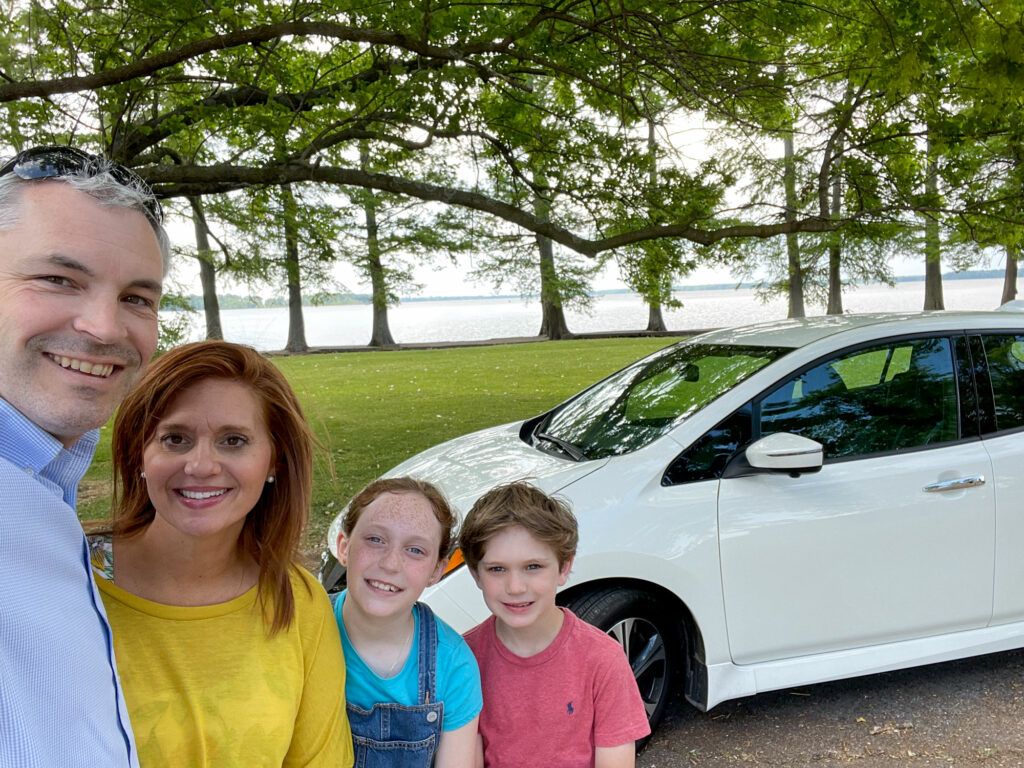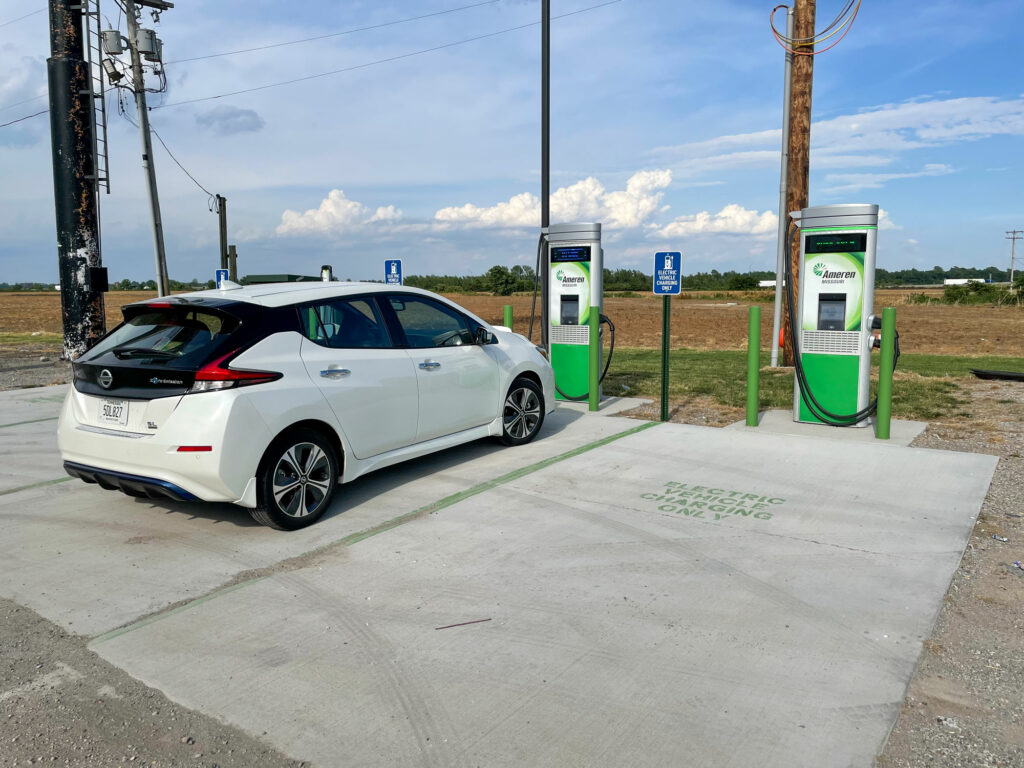Nearly 30 percent of Tennessee households have children under 18 years of age. You see a familiar cast of characters when driving past any school pickup line or through any Little League parking lot: minivans and SUVs. These vehicles provide the comfort, convenience and space that are important to many parents.
But what about electric vehicles? Are they a good fit for busy families with kids?
To answer this question, our family of four, including our 10-year-old daughter and 8-year-old son, drove a 2021 Nissan Leaf SL Plus for a week to see how it would handle family life. During this time, when possible, we exchanged the keys to my truck and my wife’s SUV for the compact, electric vehicle.
Around town
During our test, we used the Leaf to go to the grocery store, church, school and ballgames. Short trips were comfortable. There was adequate leg room in both the front and back and a surprising amount of storage in the rear hatchback.
Perhaps the best feature of an electric vehicle is the fact that you never have to stop at a gas station. Assuming you don’t take any long trips, just plug in the vehicle at night, and it will be fully charged by morning, even when using the 110 volt outlet in the garage.
We did, however, quickly notice one big problem: Our Leaf did not have any cup holders in the backseat. We try to avoid eating out, but when we’re running late for school or church, it is often necessary to grab a meal and eat in the car. Kids need cup holders. They need them for drinks, but they also need them for Legos, softballs, candy wrappers and the other random and often sticky things that seem to collect in our backseat. The lack of cup holders made meals difficult, and it was nearly impossible to keep the backseat clean. I did some research and found that rear cupholders are available as an option. My message to prospective Leaf shoppers who also happen to be parents: Go crazy; spring for the rear cup holders.The road trip
At the end of our week with the Leaf, having become more familiar with the car and its range, we set out on a two-day road trip.
We packed way too much for such a short trip, but there was plenty of space in the rear for our stuff. The backseat was a little cramped for the kids, their back packs, iPads and the other things they felt were necessary.
The Leaf was fully charged when we left our home in Henderson. We stopped for lunch in Jackson before continuing on to Discovery Park of America in Union City. We explored for a couple of hours and even found a display on electric vehicles.
We had traveled a total of 83 miles so far. There are a few chargers in Union City, but none of them are within walking distance of the museum. We still had plenty of range, so we pressed on.

Our next stop was Reelfoot Lake State Park in Tiptonville, about 24 miles to the west. Reelfoot Lake is beautiful, and the kids quickly found a playground with a really fun obstacle course. This would have been a great place to spend a few hours charging the car, but there was no charger anywhere near the park.
Our plan was to travel to Memphis for the night. The hotel we selected had an EV charger, but it was 104 miles away, and we had a range of about 130 miles remaining on the battery. This was concerning because there is only one public charger, a slow Level 2, between Reelfoot Lake and Memphis.
What we really needed was a quick-charger that could charge the car in about 30 minutes. These chargers are convenient, but they are few and far between.

About half an hour later, we were back on the road and easily made it to Memphis. We stopped for dinner before going to the hotel where the car charged overnight.
The next day, we explored Memphis before heading home. We made the 91-mile drive back to Henderson with no issues and with range to spare. In total, we traveled about 356 miles, and it cost less than $20 in electricity.
The takeaways
The Leaf was fun to drive, and never having to get gas or change oil is a plus for busy families. It costs about $4.20 of electricity to drive the Leaf 100 miles versus $9.68 in gas to drive my wife’s SUV, so there are definite cost savings.
The particular model we tested lacked some features that would be important to families with kids, but most of these are available as options at purchase or can be added as aftermarket accessories.
For routine, everyday driving, an electric vehicle can be a great fit for families.
Traveling longer distances, however, is more complicated. The lack of fast, reliable chargers — especially in rural areas — is a significant concern. A road trip in an electric vehicle requires precise planning that can be a challenge when kids are involved. Until charging infrastructure expands, you will likely want to rely on a gas-powered vehicle for longer trips.
Despite these limitations, parents in the market for a car should take a careful look at electric vehicles, especially if it will primarily be driven short distances. You may be surprised by the comfort, convenience and savings they provide.



